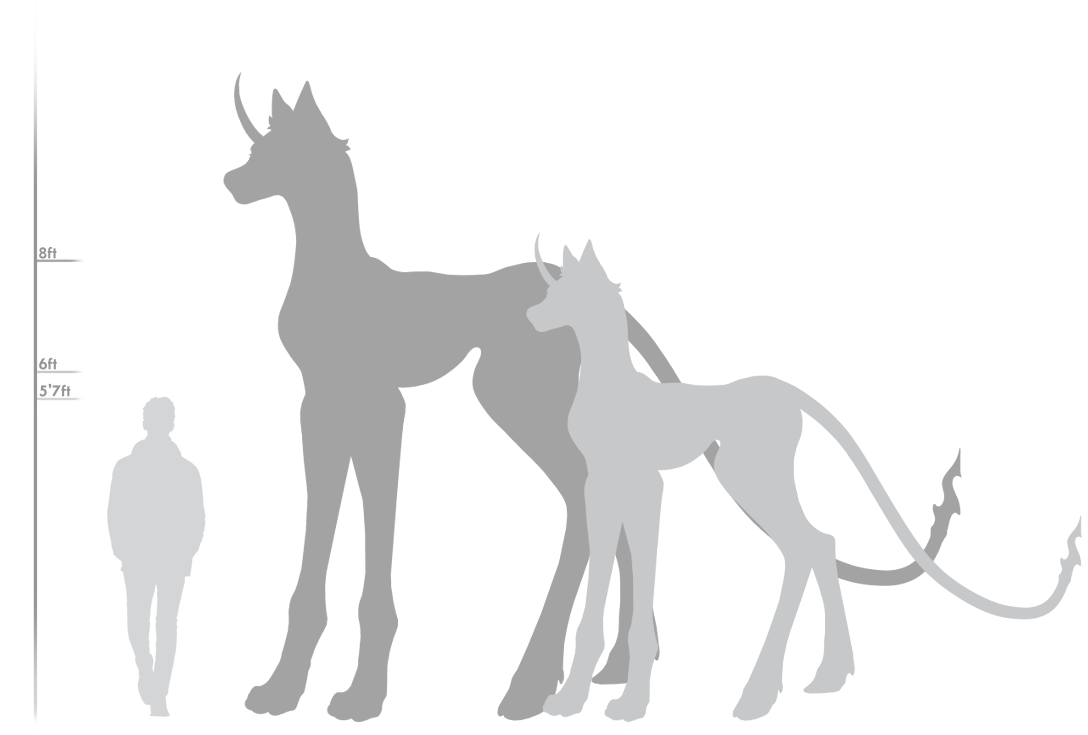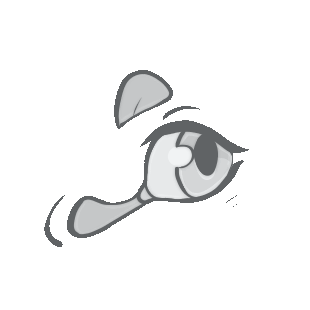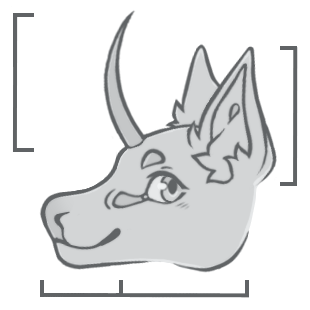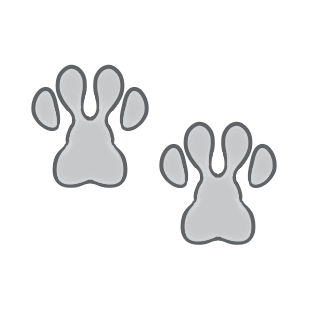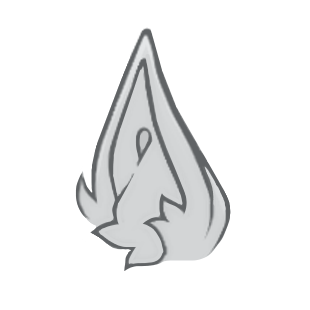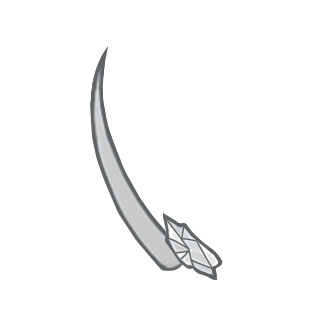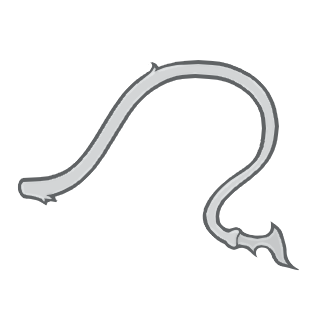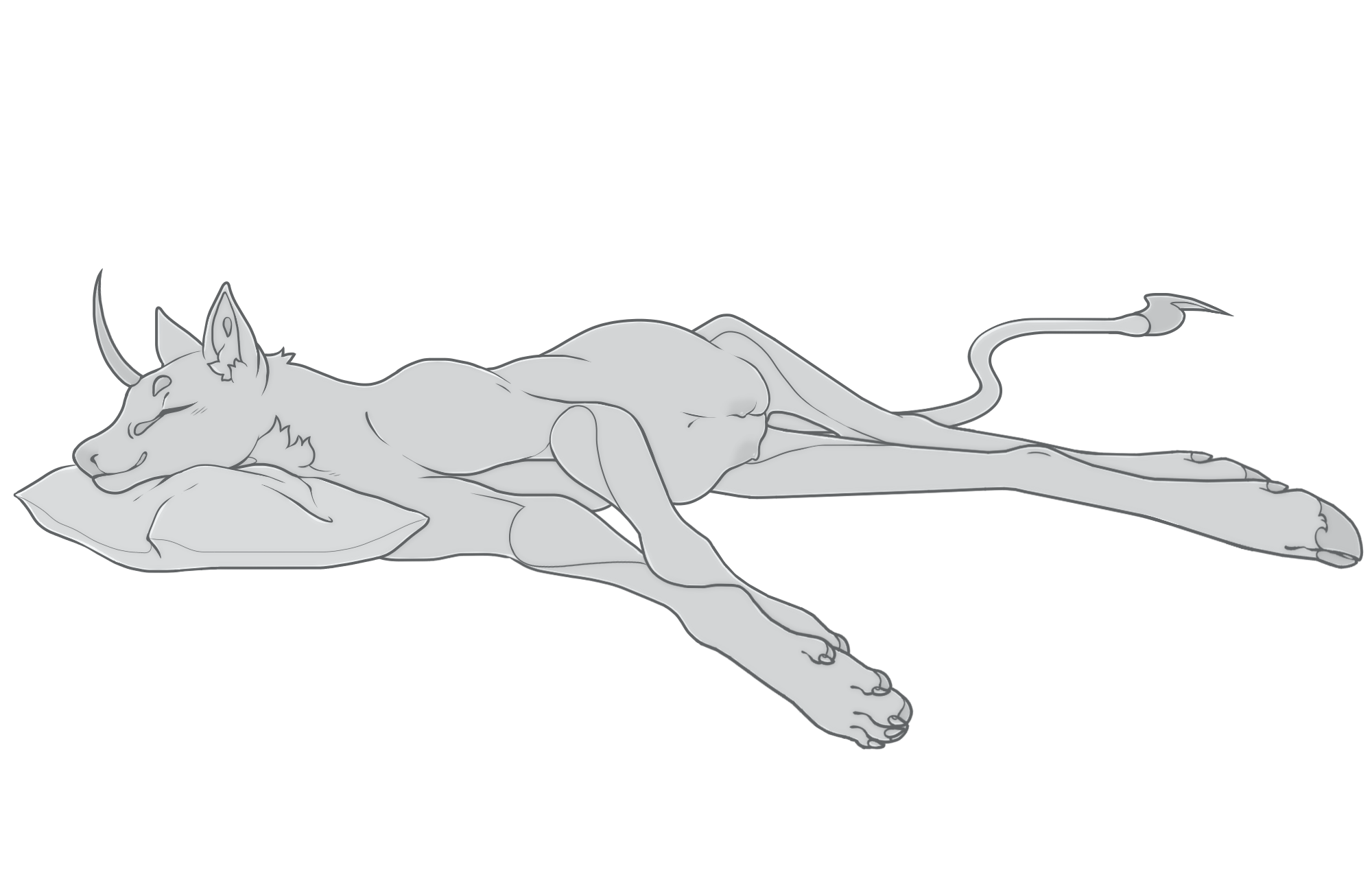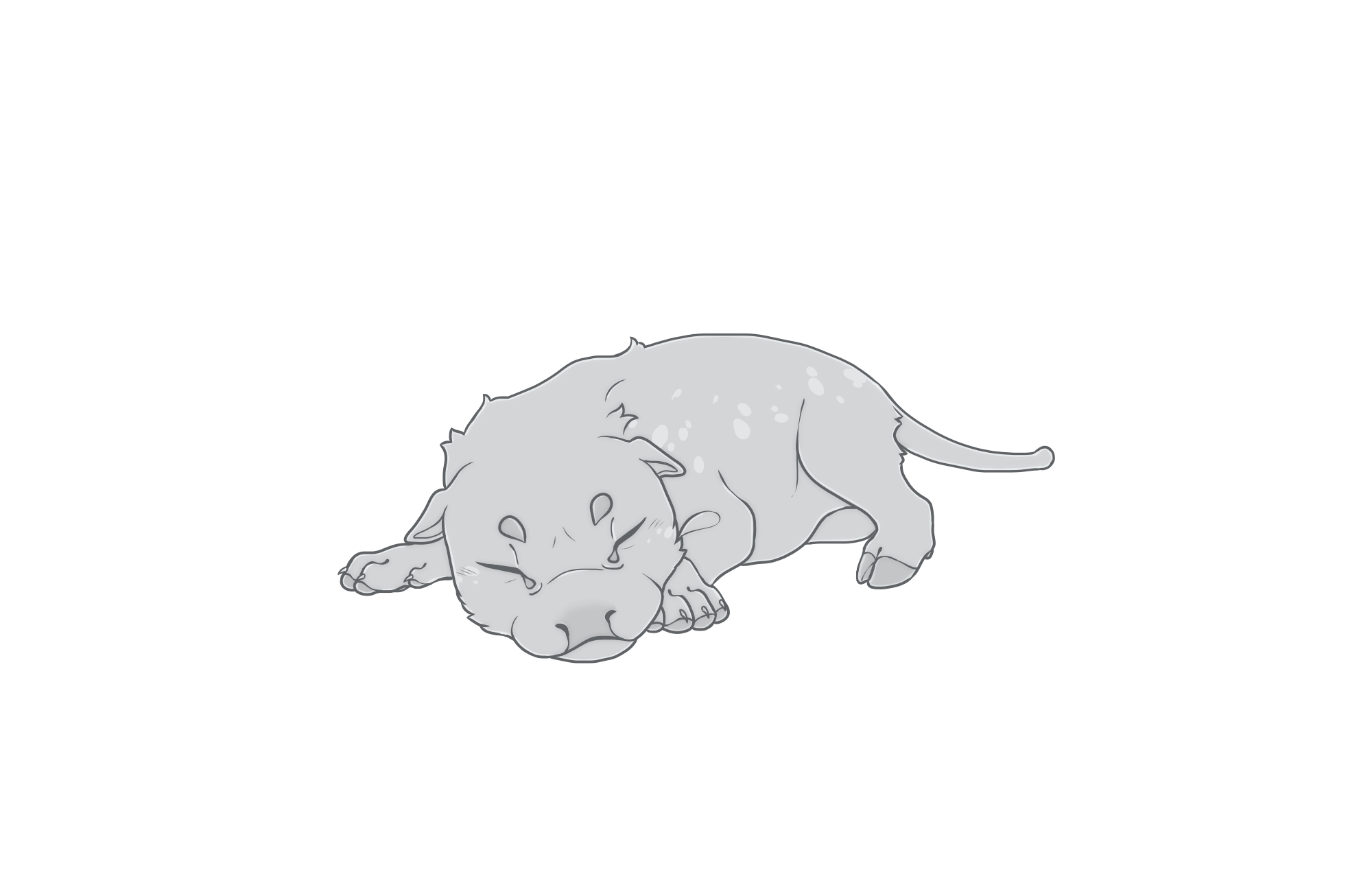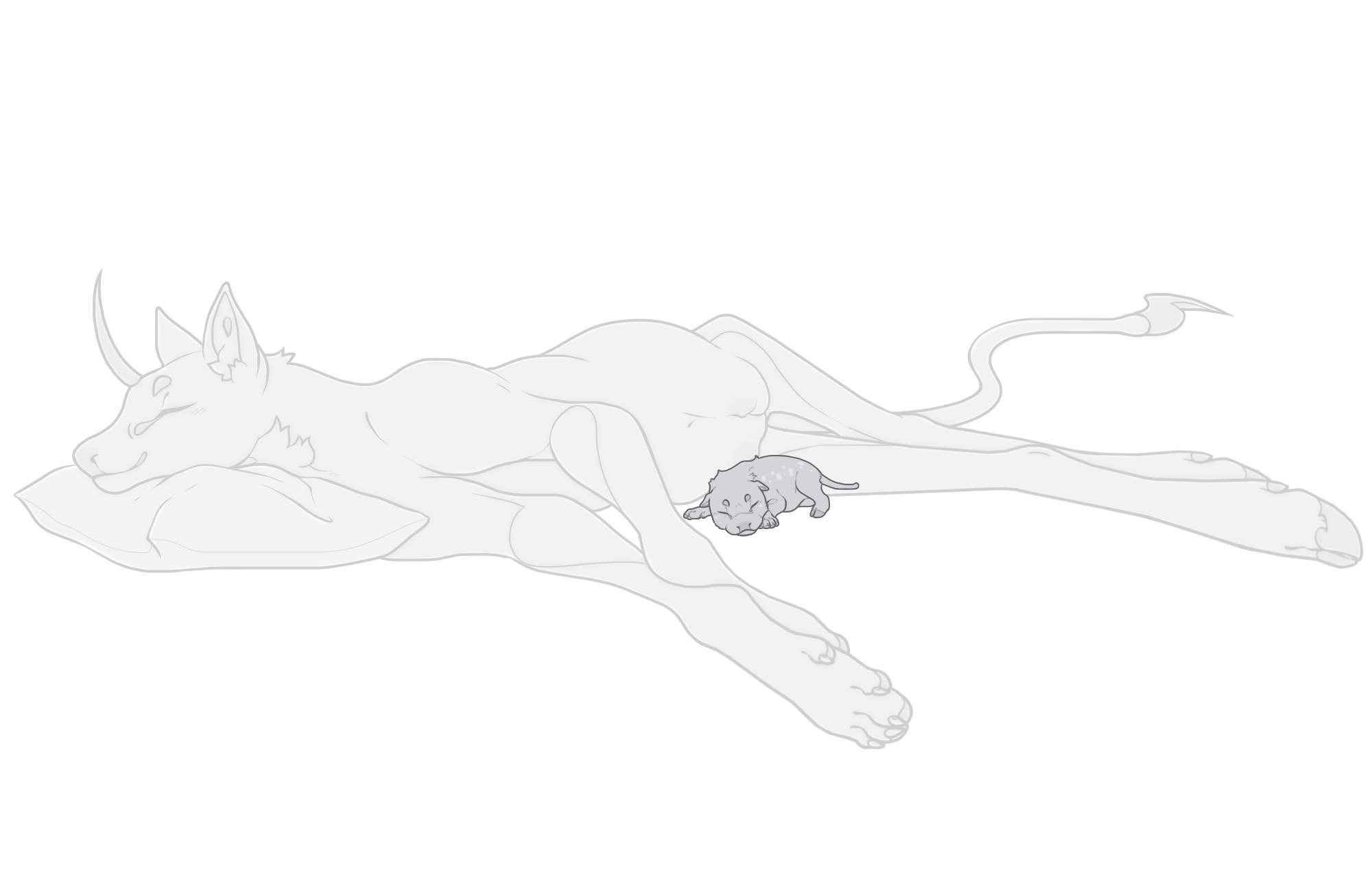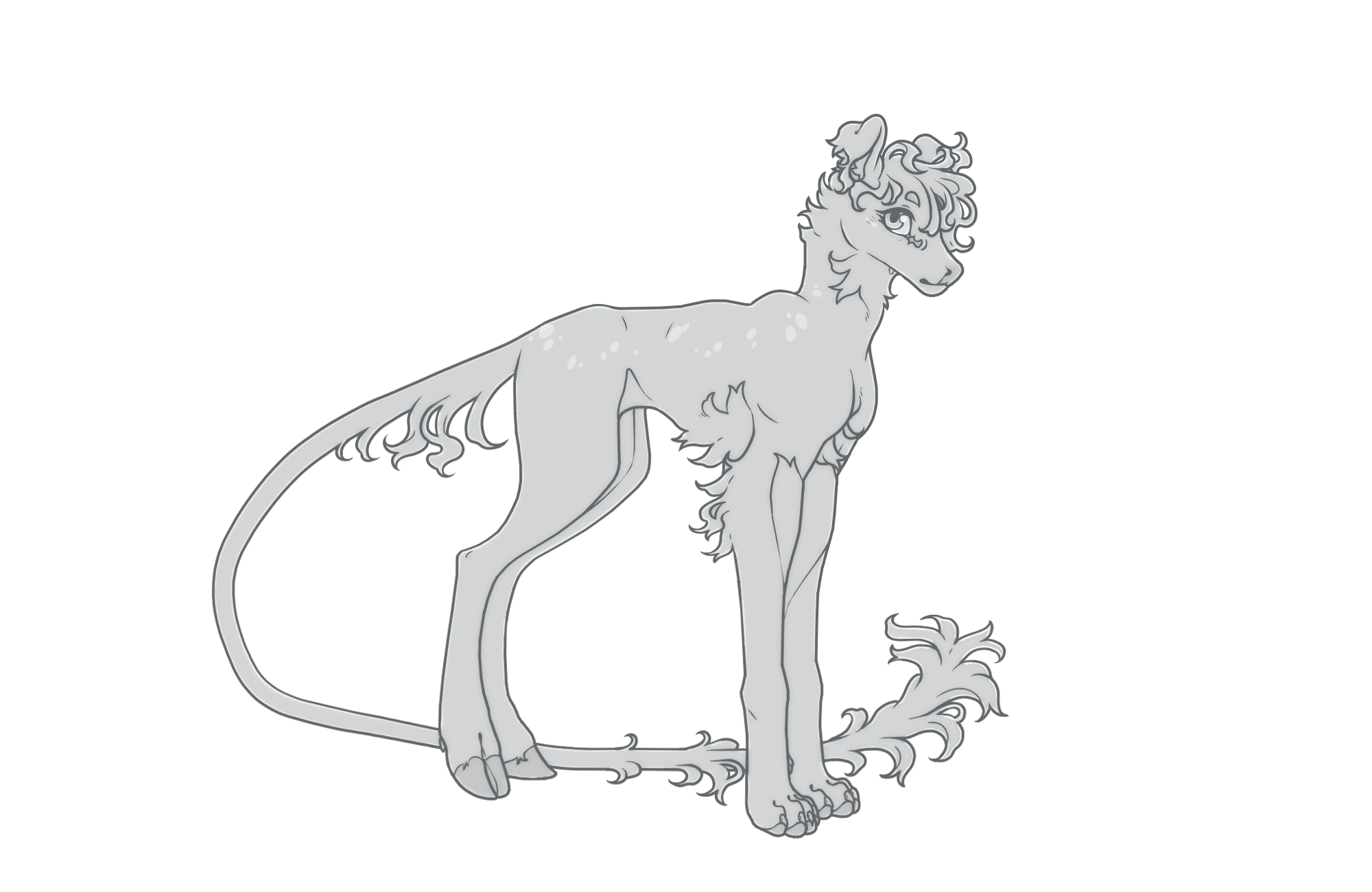TABLE OF CONTENTS
CORCEÏS ANATOMY
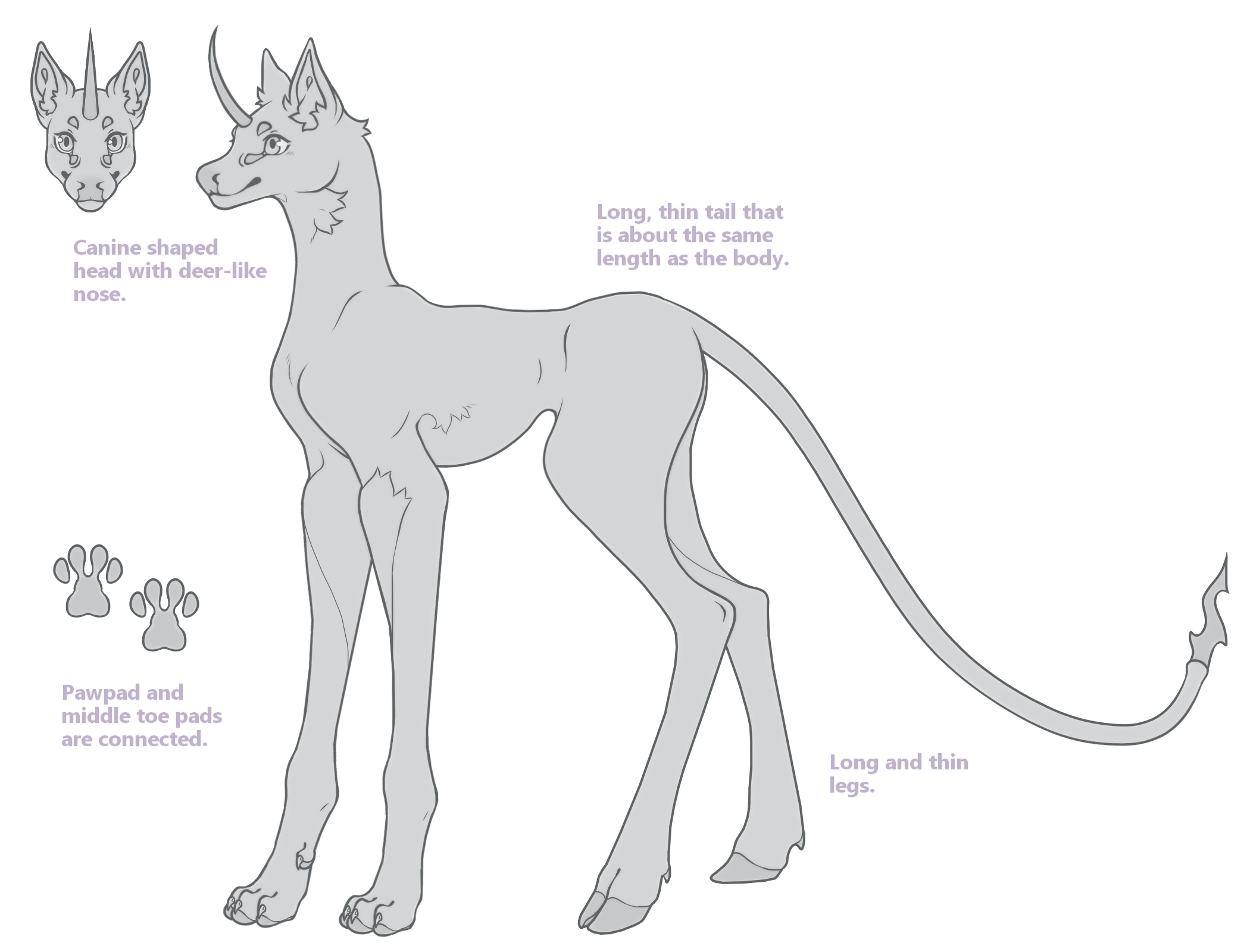
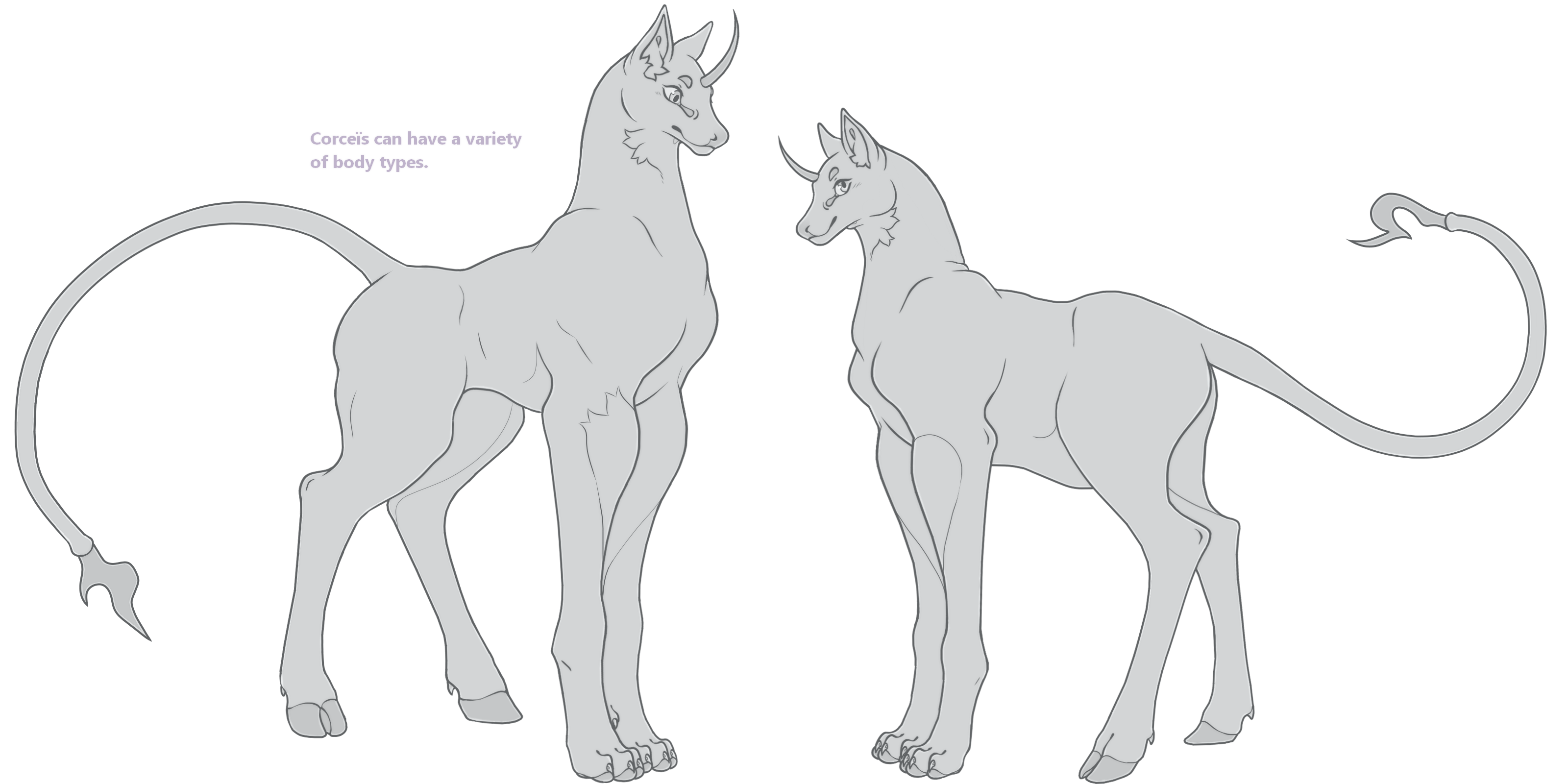
Corceïs are highly intelligent and evolved creatures, on par with humans (even though humans do not exist on their planet), their anatomy being a mix of ungulates, like muntjac and elk, and canines, such as maned wolves! They can perform magic with their horns; you can read more about their magical abilities here.
|
|
They are known for being agile and fast creatures; their size can vary from as small as 6ft up to 8ft (from toe to shoulder); of course, this does not count the mutations some can be born with, such as munchkin and gigantism. Usually, they are very lean and long creatures, their legs alone making up 60-70% of their height, but it does not mean they cannot have a variety of body shapes and sizes. Some may be naturally larger; some may have more developed muscle structure, giving them more oversized paws, etc; genetics play a vital role in determining your corceïs' natural appearance. |
Their neck is about half the length of the legs, and the tail is typically about the same length as the body, if not longer. Biological females tend to have a slightly larger pelvis to help deliver their offspring, but besides that, males and females have no biological difference.
Coat
Corceïs coat can be any color or texture; some may have very short coats, while some can be walking furballs, or even have full-grown beards or moustache! There is no limitation on how long their coat can get and what texture it has, be it straight hair, wavey hair, curly hair, coily hair, etc. But it is widespread to see corceïs with manes, which don't need to follow the texture as the rest of the coat; many will cut, style, etc, their manes to fit their liking.
Despite being able to be any color coat-wise, their skin can only be natural colors, ranging from cream, pale pink, grey, brown, black, etc. (paw pads, scent glands, and nose are exceptions.)
They can only be born with natural markings; what would be considered a natural marking? Simple, any marking that can be found in actual existing mammals, spots, stripes, etc; of course, with spells and illusions, it can be changed.
Skeleton
Corceïs bones are light in weight; they can only be a cream color. However, mutations like Colored Bones can change the color of their skeleton.
Hover your mouse cursor above the image!
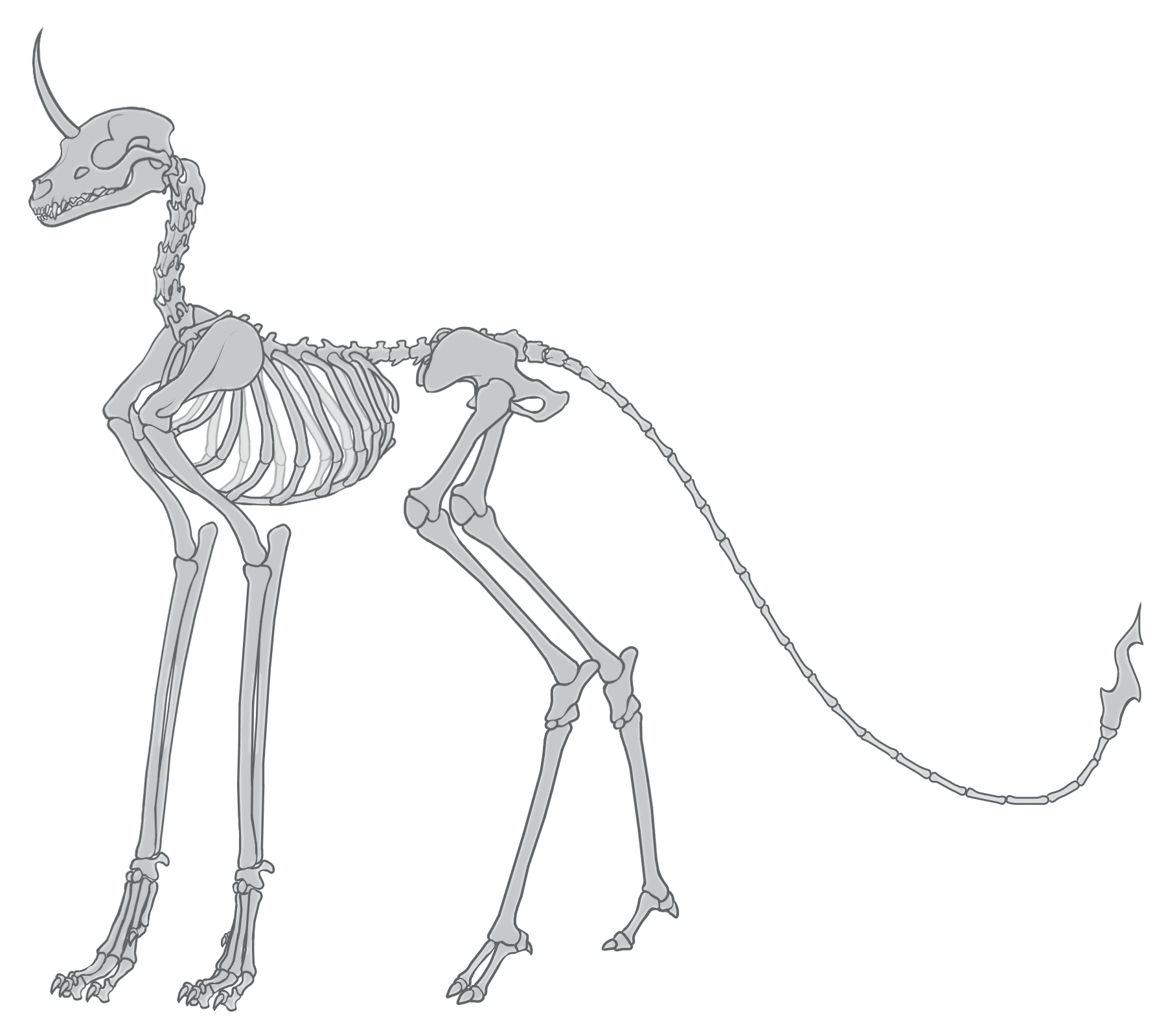
FEATURES
Ankles are placed right on the middle of their hind legs like most deer species; their neck is about half the length of the legs, and the tail is the same length as the body or longer, never shorter. Long, usually thin muzzles.
( Warning: mutations like Munchkin, Deformed Tail, and Brachycephaly can change some proportions. )
|
|
Their eyes can have any sort of shape found in other animals, with round pupils that can shrink into a thin line, Corceïs also have a third eyelid, or, more properly called the palpebra tertia, tucked into the corner of their eyes. The sclera must be pastel/light colors with the same hue as the iris (only with Vortex Eyes and Dark Eyes you can bypass this). |
|
|
All corceïs have scent glands, connected to their eyes, and about the same size, like nostrils; they can open and close at will; they were once valuable biological tools to mark territory, though of course, nowadays, with their society, there is no need for such. |
|
|
Their muzzle takes about 40% of the length of their entire face; however, with mutations like the Brachy Mutation, a few cors can be born with different lengths and types of muzzles. |
|
|
Their digestive system has completely adapted to an omnivore diet, calories, fibers, etc. being essential in their diet; they can basically eat any food, but with evolution, many are not keen anymore on eating raw meat, for example, often it would lead to sickness if done. |
|
|
Their middle toe pads are directly connected to their paw pads, formally known as conjoined paw pads. However, there is no presence of paws on the hind limbs. Instead, they have hooves made of the same material as the horn. It is believed that the reason why corceïs can have such different types of hooves would be due to hybridization with other species of the same genus. |
|
|
Fur protects their ear canal, completely sealing the entrance with a soft, thin texture of fur that does not interfere with their hearing. |
|
|
The horn is made of the same material as bone; it is dense and resistant, can be any coloration, and can have markings. Inside their horn, crystals can be found directly connected to the horn tissue, being the only source of their magic; if damaged, it can significantly affect one's ability to use magic, if not cause them to be completely unable to perform it. |
|
|
Their tails are thin, and tend to be about the same or twice the length as the body (Chest to rear), though some cors can be born with tails five times the size of the body (This is a paid trait however). |
Corceïs blood, much like humans, is a dark, red color that can vary in shade of color from cor to cor; it is rich in many nutrients; once it is in the process of Crystallization, it is possible to spot tiny pieces of crystal in their blood, usually near impossible to spot with no light nearby to reflect it.
You can read more about Crystallization in Magic!
Life Cycle
|
Only sexually mature corceïs of opposite sexes (or intersex) can mate and produce offspring, usually one or two, but triplets or quadruplets aren't unheard of. There had been recorded cases of twins having different fathers. The female is the one to carry on the offspring. |
|
|
|
Corceïs fawns are born blind and deaf and only open their eyes and can hear after one week. They are born small and fragile and depend strictly on maternal milk until they are two years old, but some may continue to be breast fed until they complete five years. They can be born with simplified or sometimes not even visible markings; some may take weeks to show, while others might only show in later stages of life; they are born with a very soft and fuzzy coat that changes once they complete one year. And of course, a line of spots on their sides, lighter than the main coat, all fawns are born with it, even if not visible (white fawns). Corceïs will stand and start to learn to walk around four weeks after birth, being fed every two hours, and parents will be on parental leave until they complete three months of age. |
|
A quick example of how large they usually are upon birth, of course, some are born larger or, smaller, especially premature fawns. Fawns are only viable after the ninth month of pregnancy, but the closer they get to the twelve months mark, the higher the chances of them surviving, and living with no health issues. Prematurely born fawns have higher chances of developing respiratory problems, weak immune systems, birth defects, etc, while some of it can be reverted or the quality of life can be increased via treatment, many will need life-long treatments and even possibly surgeries through out their life to correct defects. |
|
|
They are no longer considered a fawn once they complete their first year of life. At that age, they will already be saying their first words and forming sentences, though they only thoroughly learn how to speak by around the age of three to five. They still lack horns and stingers and cannot perform magic; horns will only start growing by the age of four to six years old and will continue growing until they become mature adults. For those born with no markings or very faint ones, the markings will become more visible and less simplified; new markings can also appear during that age. Their fawn spots are still present throughout their entire yearlinghood, unless of course, their coat is too light for those to be visible. |
|
They may also have slightly flopped/bent ears, that may straighten up with age, or, stay down, it depends entirely on their genetics (Users can portray their fawns/yealings with flopped ears without needing the trait as long as their mature versions have the future ear drawn in their masterlist).
Yearlings will also start being schooled at their homes by their guardians or with teachers in a nursery; however, they are only required to be enrolled in schooling by the age of five, which will only end by the age of eighteen.
|
|
In this stage, corceïs will start to mature and learn magic, often sent to magic academies to continue their studies, in nearly all provinces of Postinen those academies can be found, however, the most well-known ones are found in the Capital of Callasta, and Crorport. Those academies can be quite hard to apply to, as they only wish for the best the society can offer, most will host annual trials in which corceïs of all ages can participate. |
Their fawn spots will completely fade as they become young adult corceïs! Though it isn't unheard of some corceïs fawn spots never fade as they age.
Adolescent corceïs are only a bit smaller than mature corceïs, but besides that physically they are pretty much the same! At that age, they can also reproduce though society deeply frowns upon it due to their lack of maturity.
|
By that age, they will already be considered mature, able to mate and create offspring; at that time, they will have mastered their magic and start to be part of society actively as an individual. It is very common for young adults to form social groups, even share housing with a group as they still get prepared for the adult life ahead of them. |
|
|
|
Once they complete thirty years of age, they are fully matured biologically; they will stop growing and, from then on, will start to show signs of aging slowly. |
At that age normally their lives are pretty stable, already having offspring, their own home, etc, but of course, it isn't always the case.
|
At this age, corceïs will usually settle down where they will spend the rest of their days into retirement. They become more susceptible to multiple sicknesses as their immune system weakens, and their markings and colors become duller, their muzzle may have white fur around it, that will spread through their face as they age, some cors have been documented as having their entire muzzle turning white. The oldest cor documented lived up to one hundred and thirty five years old. |
|
Corceïs will generally retire upon reaching eighty years old, as by then, usually, age had a significant hit on them, some cors do better than others throughout their senior years, be it because of genetics, or simply a healthier lifestyle.
Some do get to retire earlier due to injuries, mental disorders, or specific jobs that require them to be fit, such as scouts, even though sadly, it is quite rare to see a retired scout, with how high fatalities are in this area.
Mirrored Dimensions
In the initial creation of Corceïs, the species was created with feral forms being the only canon-allowed forms. Other forms were allowed but could not be used for official submissions for canon-related events.
So, what exactly is the Mirrored Dimension? It's a copy of the Corceïs world where almost everything is the same! The difference? They are anthro or humanoid only! below, you can see examples of how they would look in such versions. Their anatomy does change, but their main features, such as long tails, scent glands, paw pads (anthro), etc, are still present! Anthro and Humanoid cors are taller than their feral version; their height is around 9ft to 11ft (from hoof to shoulder).
Now, you can create a cor as a Feral, Anthro or Humanoid! Or all three! Of course, they are in a separate dimension, this is not a form corseïs can change into, so when portraying them in prompts, etc, make sure to keep in mind that those versions do not coexist officially!
To create an alternative version of your cor as one of the options, you may buy a Mirror Key! Which can be found on the Token Shop!
When submitting one of those versions, remember that genitals cannot be included, however, you can draw them wearing clothes.
Anthro Version
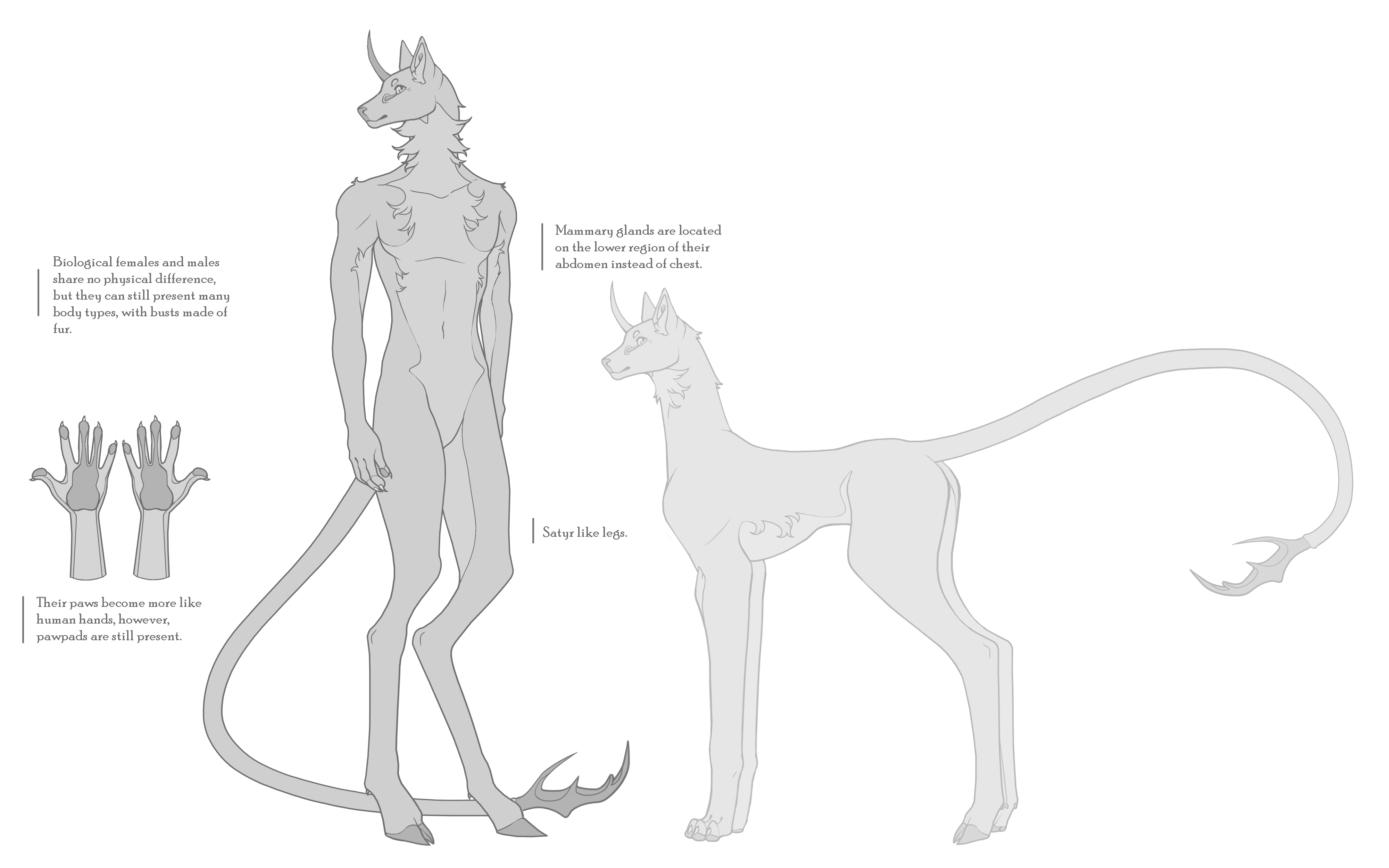
Faun Version
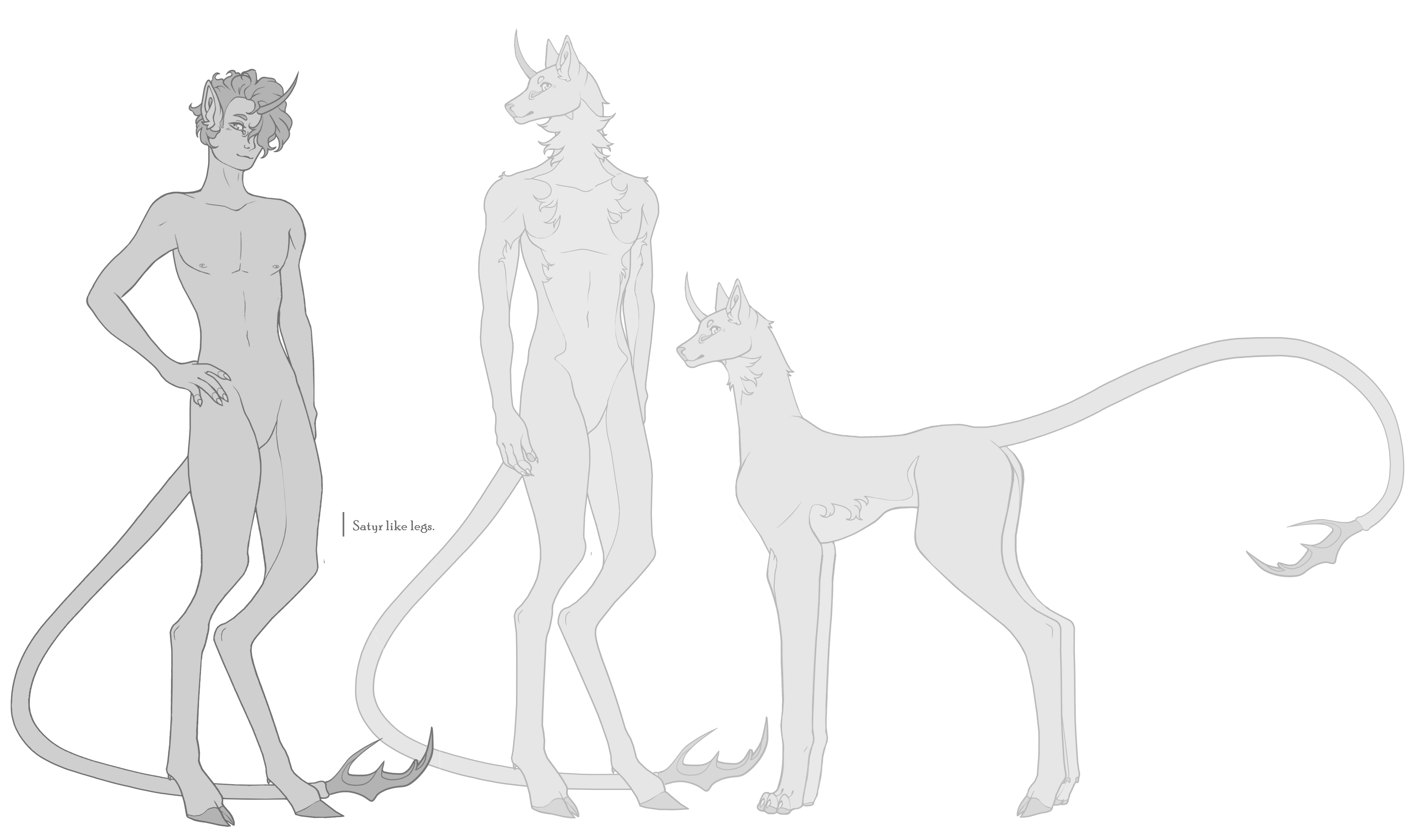
Humanoid versions may have natural colored skins like humans, however, their legs, tails, and ears can be any color due to being covered in fur. They must also have long, sharp nails that remind claws.
Different from the anthro version, Humanoid Version can have biological differences between sexes that are visible (such as a larger chest).

